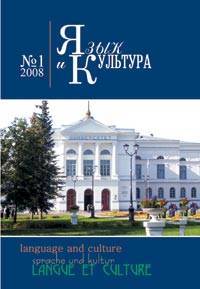Communicative-cognitive case-method in teaching English to students: didactic potential
We consider the didactic opportunities of the case-method for the foreign professional and communicative competence formation of the students whose specialty is "Tourism" in the field of "International and Business Tourism". The authors make a review of research dedicated to the case-method. They reveal the difficulties that may arise when this method is applied for teaching 1-2-year students of non-linguistic specialties. A concrete example of the communicative-cognitive case, developed by the authors, is given in the article which is adapted to the early stage of professional training in higher educational institutions and helping to unite the process of foreign language learning in the 1-2 year with the development of the professional competence. Communicative-cognitive cases are dynamically organized, professionally oriented, foreign educational texts that include a set of communicative-cognitive tasks, chosen in accordance with a range of competences we form, and that give the algorithms and different variants of solving the most typical job-related issues. Structurally communicative-cognitive cases include: a plot, informative, methodical, summarizing, reflexive and training parts. The authors describe the process of professionally oriented foreign language teaching directed at the formation of the foreign professionally communicative competence of the 1-2-year students whose specialty is "Tourism" in the field of "International and Business Tourism". This process includes three modulus: preparatory, transitional and concluding. All the above-mentioned modulus correspond to three types of communicative cognitive cases that differ from each other according to the degree of students' independent artistic activity. The classification which demonstrates three levels of development of students' cognitive independence make the basis of the case level gradation. The authors offer methodical recommendations for each stage of working on the case. A system of demands for the creation of cases is developed.
Keywords
метод кейсов, иноязычная профессионально-коммуникативная компетенция, коммуникативно-познавательные кейсы, социальное и профессиональное развитие личности, познавательная самостоятельность обучающихся, case-method, foreign professional and communicative competence, communicative-cognitive cases, social and professional development of a person, students' cognitive independenceAuthors
| Name | Organization | |
| Ariyan M.A. | Nizhniy Novgorod State Linguistic University | fenkot603@yandex.ru |
| Klyueva M.I. | Humanities Faculty, Nizhniy Novgorod State Pedagogical University | klyuevami90@mail.ru |
References

Communicative-cognitive case-method in teaching English to students: didactic potential | Yazyk i Kultura – Language and Culture. 2017. № 40. DOI: 10.17223/19996195/40/11
